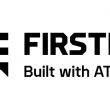Wi-Fi investment pays off for transit agencies large and small
Federal, state and local public-transportation agencies all seem to have two things in common these days: they want to increase ridership, and they believe that providing wireless broadband connectivity to their passengers is the way to do it.
“Connectivity is part of making transit more appealing and getting people out of their cars and onto trains and buses,” said Jim Baker, founder and CEO of Xentrans, a San Francisco–based consultancy that specializes in communications for mass-transit agencies. Baker spoke on the topic during an educational session held in March during the International Wireless Communications Expo (IWCE) in Las Vegas.
Another speaker — Richard Bertalan, communications system manager for the Santa Clara (Calif.) Valley Transportation Authority, which serves the city of San Jose and the surrounding area — agreed.
“The number-one passenger request is Wi-Fi — not faster service or cleaner trains,” he said. “If you give it to them, they might keep riding.” Bertalan added that some of the agency’s riders let some trains go by in order to get on one that has a Wi-Fi sticker affixed to its side.
Amtrak is “the poster child” example of a transportation agency that has leveraged Wi-Fi to great advantage, Baker said. The agency launched service in March 2010 on its Acela express train line that caters to business passengers. The free service is available on 20 trains and in nine stations between Boston and Wilmington, Del. He added that Amtrak has plans to add a near-field communications component that will let passengers buy tickets and snacks using their smartphones.
According to Baker, 35% of Amtrak’s riders use the Wi-Fi service. “That’s really quite astonishing — usually if you get 10–15% uptake, you’re doing really well,” he said. “Granted, the Acela is a commuter line and people are stuck on it for several hours at a time. Nevertheless, this is very impressive.”
Baker cited the Chittenden County (Vt.) Transportation Authority as a shining example of how to make Wi-Fi available to passengers on the cheap. “They’re using an inexpensive router — which costs about $300 — and they just plug in a dongle that provides the Wi-Fi service on the bus. That’s it,” he said. “It works well, and people are using it a great deal.” Baker added that the agency only has to sell one additional monthly pass per bus to cover the cost. “They had a very good idea of how to implement a service that doesn’t stretch them financially,” he said.
Meanwhile, each of Santa Clara Valley’s 100 train cars has been outfitted with an antenna that is roughly the size and shape of a hockey puck. “That was to ensure that the top of our trains didn’t start to look like radio towers,” Bertalan said. He cautioned that any agency contemplating adding Wi-Fi for passengers to use industrial-grade, transit-certified equipment. “You can’t just run down to Best Buy and buy a lot of consumer equipment and put it on your trains,” he said.
Eventually, the agency plans to add Wi-Fi to its buses and transit stations, as well as on its service vehicles and police cars.
Bertalan said that the agency’s customers — 83% of whom are workers or students — are “jumping all over the service” and predicted that the provisioning of Wi-Fi service to passengers is a trend that only is going to grow. However, he also offered one important caveat: “All agencies are going to do this eventually, but it has to be provided for free.”
But even as a free service, it will be a money maker, according to Bertalan. “If you put somebody into a seat because of Wi-Fi, it will pay for itself.”
The potential fly in the ointment concerns multimedia applications, which eat up an enormous amount of bandwidth, according to Clay Whitehead, an engineering manager for Motorola Solutions, who also spoke during the session. He cited a few examples:
- The average smartphone user on a 3G network consumes 400 Mb of bandwidth per month.
- The average iPhone user in New York City and San Francisco eats up 800 Mb per month.
- 4.7 Gb of bandwidth is needed to watch a DVD-quality movie streamed from Netflix.com.
- 5.8 Gb of bandwidth per month is required to watch a daily sitcom streamed from Hulu.com.
Bertalan told a similar story, reporting that in the first month after Santa Clara Valley’s Wi-Fi system was deployed, passengers used a total of 427 Mb of bandwidth in the first month. Two months later, the figure more than doubled, to 888 Mb.
“Our appetite for multimedia content is insatiable, and it’s only going to grow,” Whitehead said. “It’s frightening how much appetite we have for mobile data.”
As passenger usage increases transit agencies could be squeezed, either by being forced to pay higher fees to commercial service providers or to start charging customers for the Wi-Fi service.
What do you think? Tell us in the comment box below.
















